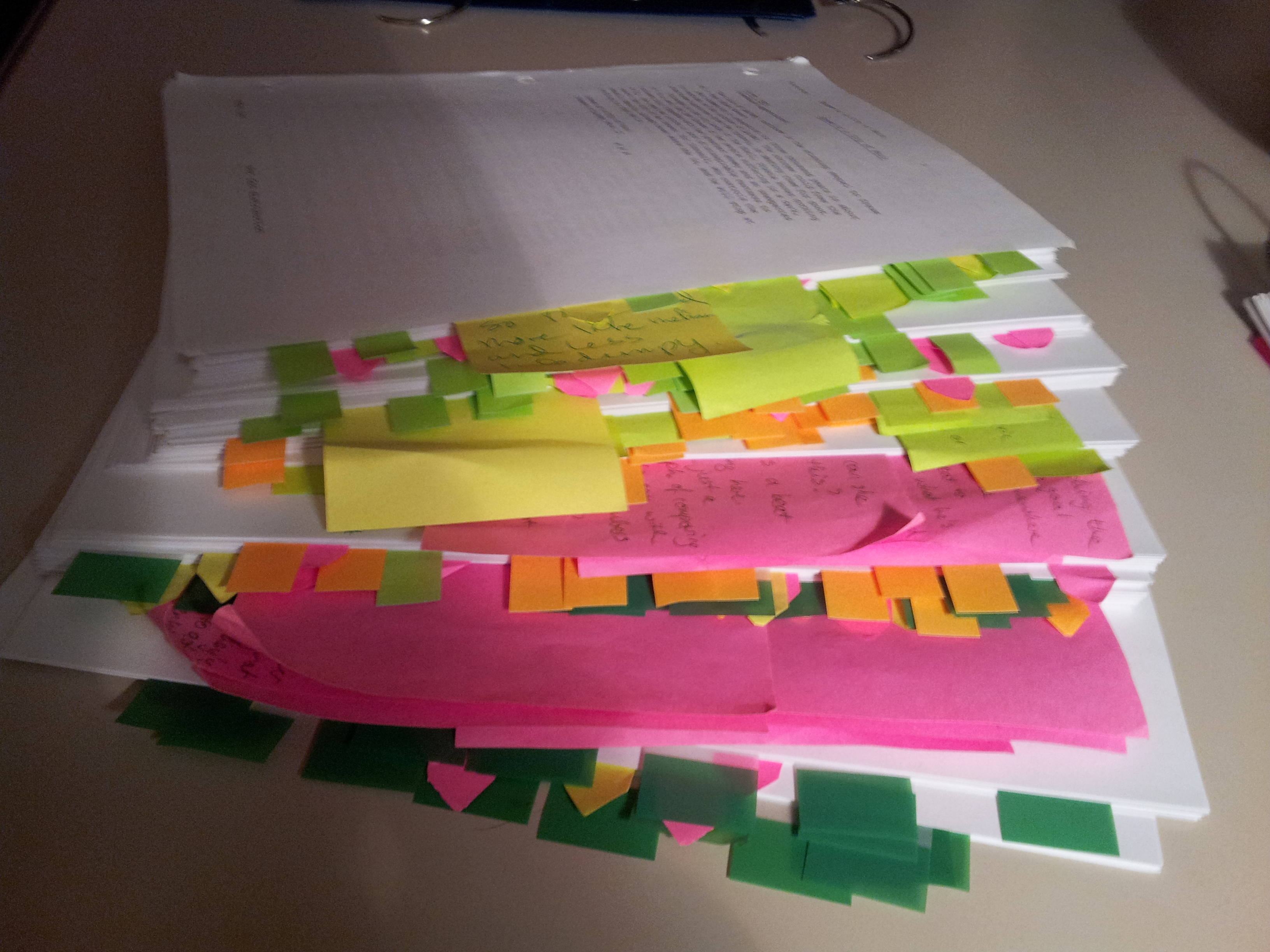
By now you’re probably tired of hearing me talk about planning, but assessing a rewrite is a lot more effective if you have a plan.
I say effective rather than “easy” because it’s still a lot of hard work. If you are working off a plan, once you have a first draft, I recommend replanning (remember, for these purposes, plan means any micro-form of the draft, be it an outline, a summary, or something in between). That is, get your plan up to speed with the actual draft.
Once you’ve replanned so that your plan matches what you have on paper, assessment goes a lot quicker. Of course, as you’re reading through your draft and revising the plan, you’re probably already noticing things that don’t quite work. I recommend making notes in a separate document as you go rather than noting changes directly on the draft at this point.
Sometimes, a rewrite needs to happen when the story as it is drafted isn’t the real story you’re trying to tell. Often this is because you haven’t found the story you really want to tell yet. It can also be because the story you thought you were telling changed, or because you didn’t quite know how to tell your story when you started drafting.
If you’re not sure whether a rewrite is necessary, examine your replan (or draft if you’re still not sold on planning) and ask these questions:
- Are the actions taken by my characters in line with their character development? If the answer is no, you probably need an extensive rewrite. Remember that events lead to changes in characters which lead to actions which create events. It’s all tied together, so one change might unravel the whole story.
- Did I start with one character as the hero and end up with a different character becoming the hero in the end? If yes, you will need an extensive rewrite to bring the real hero of the story into the forefront from the very first page.
- Does my story have a clear beginning, middle and end? If not, or if any of these three parts are weak, you need to rewrite to make them as complete and strong as possible.
- Have I said what I wanted to say, or am I afraid to dig too deeply into the real story that I want to express? This one is tough. Look for places where you almost go “too far” in language or scenario and ask, “what would I lose by following this to its conclusion?” It could be that you are suppressing or censoring yourself and weakening your story by doing so.
- If I think of the beginning of the plot as A and then last scene as Z, are any letters missing in between? If the answer is yes, you will need to rewrite to add in any missing points. Alternately, if you have four M’s in the middle, you’ll need to cut, cut, cut.
Another approach is to look at a story structure such as the universal story in The Plot Whisperer, or The Hero’s Journey, and see if any steps or characters are missing from your plan/draft. Does the climax happen too easily, without the hero experiencing a fall before rising again to defeat the villain? Have you forgotten to include a villain at all? Or a guide, or allies for your hero? This is where these story structures become the most useful, in my opinion; you can use them as a mirror to reveal the flaws in your story.
This kind of assessing is tough. It’s easy to be way too critical and forget that you’ve done an amazing thing already by producing a full first draft! This is something most people only dream of doing. When you are assessing, remember to celebrate your drafting successes. If I’m feeling down about a draft, I like to go back through and find a favorite scene, one I know I nailed, and reread it. Also, looking for the strengths in the draft in addition to the weaknesses can help you find the real story lurking under all those words.
If you’re still not sure after answering all these questions, get help! I don’t usually like to show first drafts to my writing community but sometimes it is unavoidable. Sometimes you need a little extra perspective to know whether it’s time to rewrite or just revise.
Once you’ve assessed your draft completely, it’s time to plan out a rewriting strategy. Join me in the next post: 101 TIWIK #58: Rewriting Part III: A Strategy for Strategizing.



